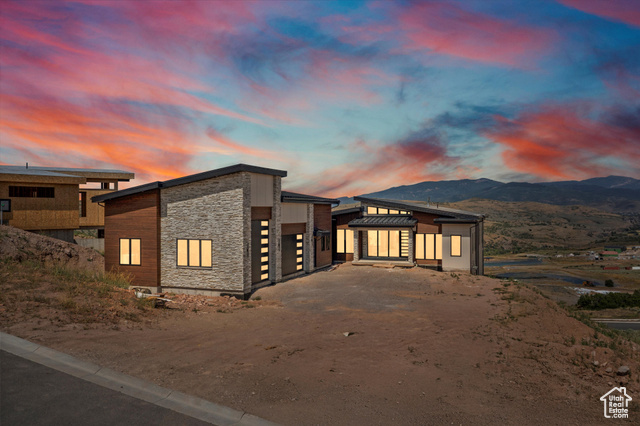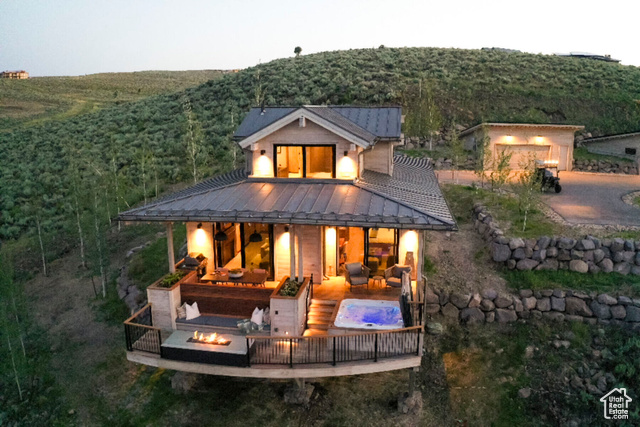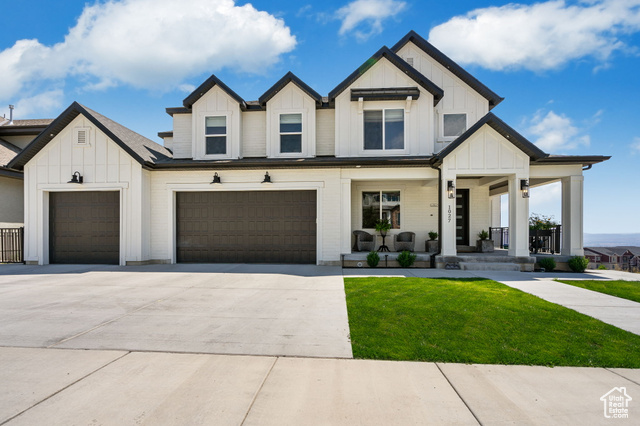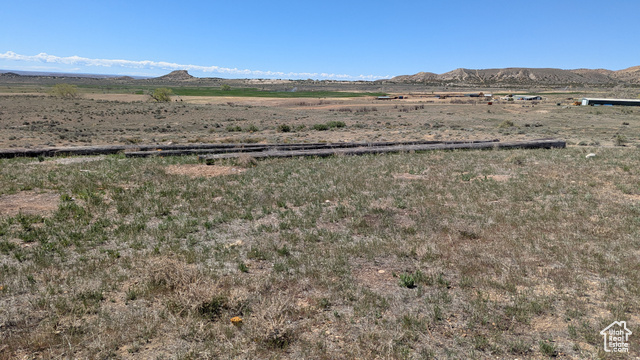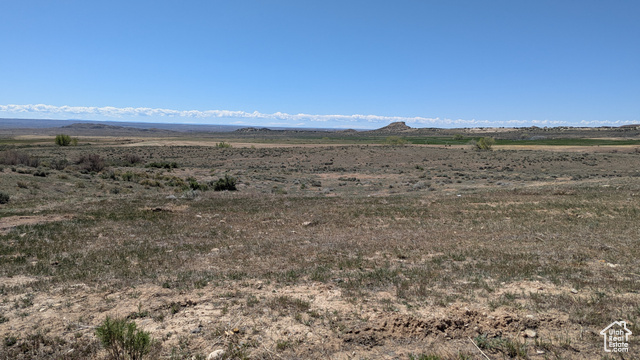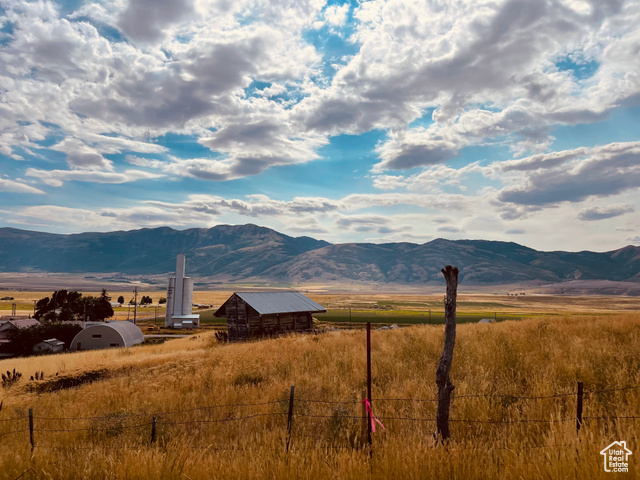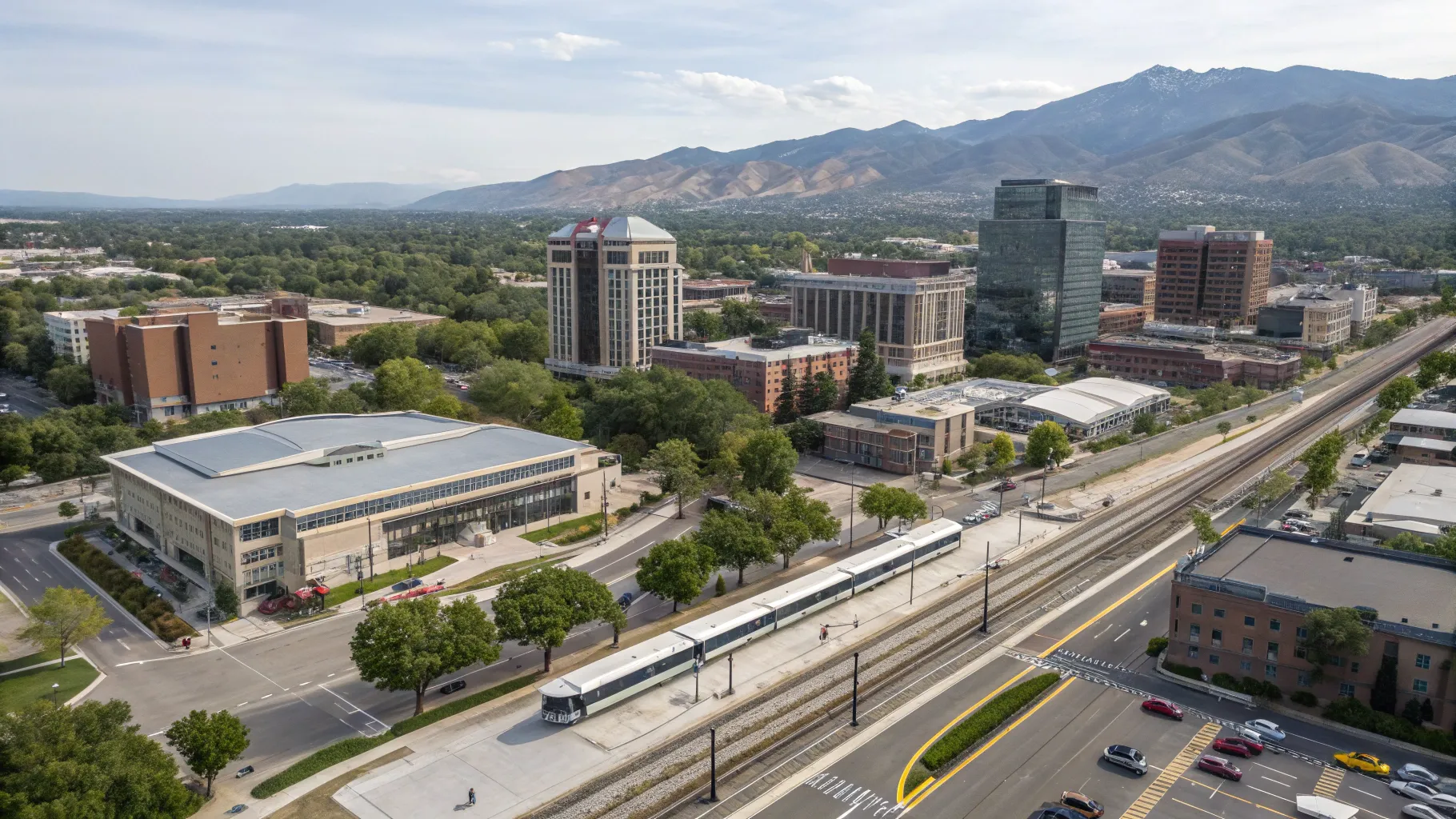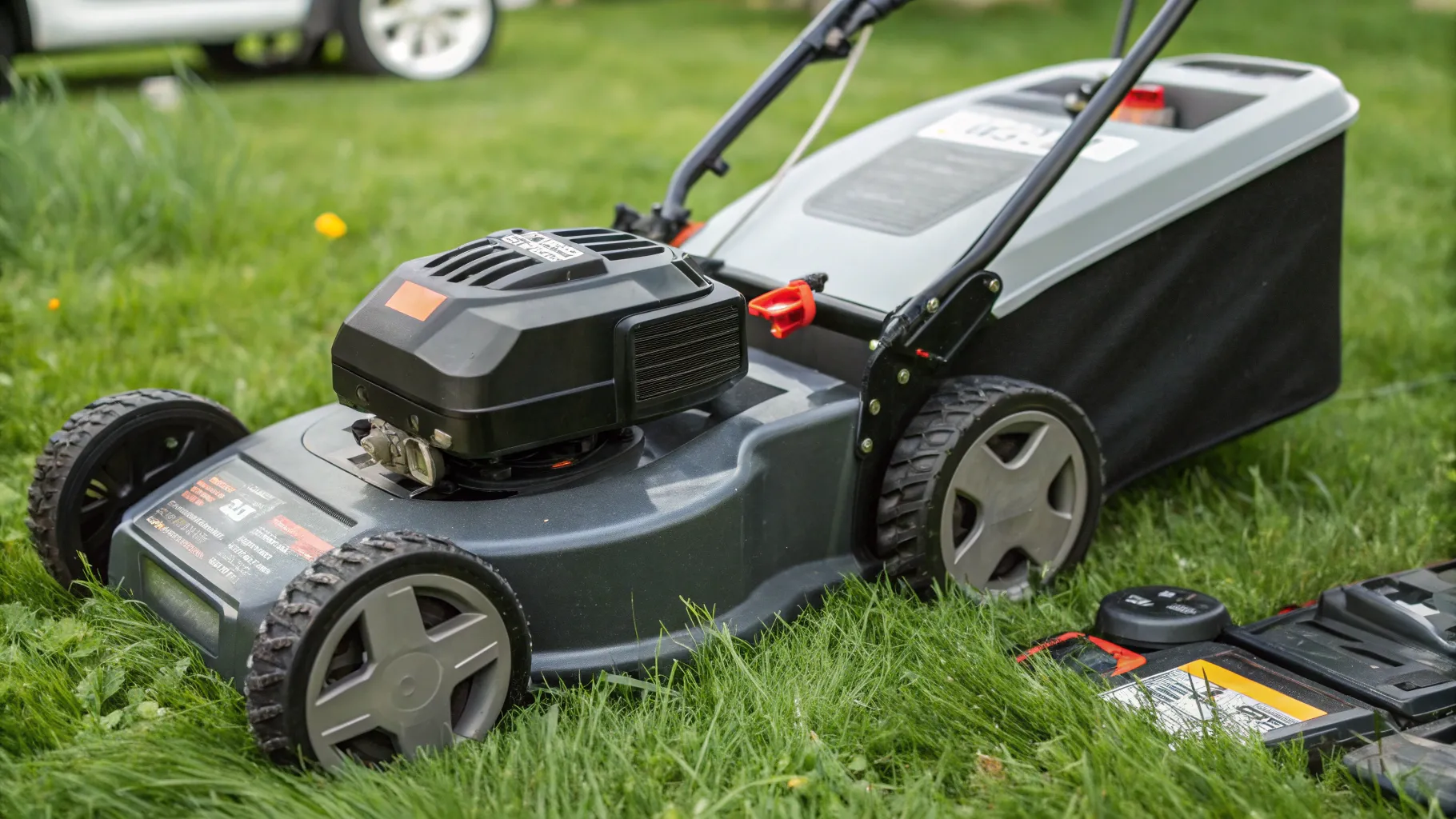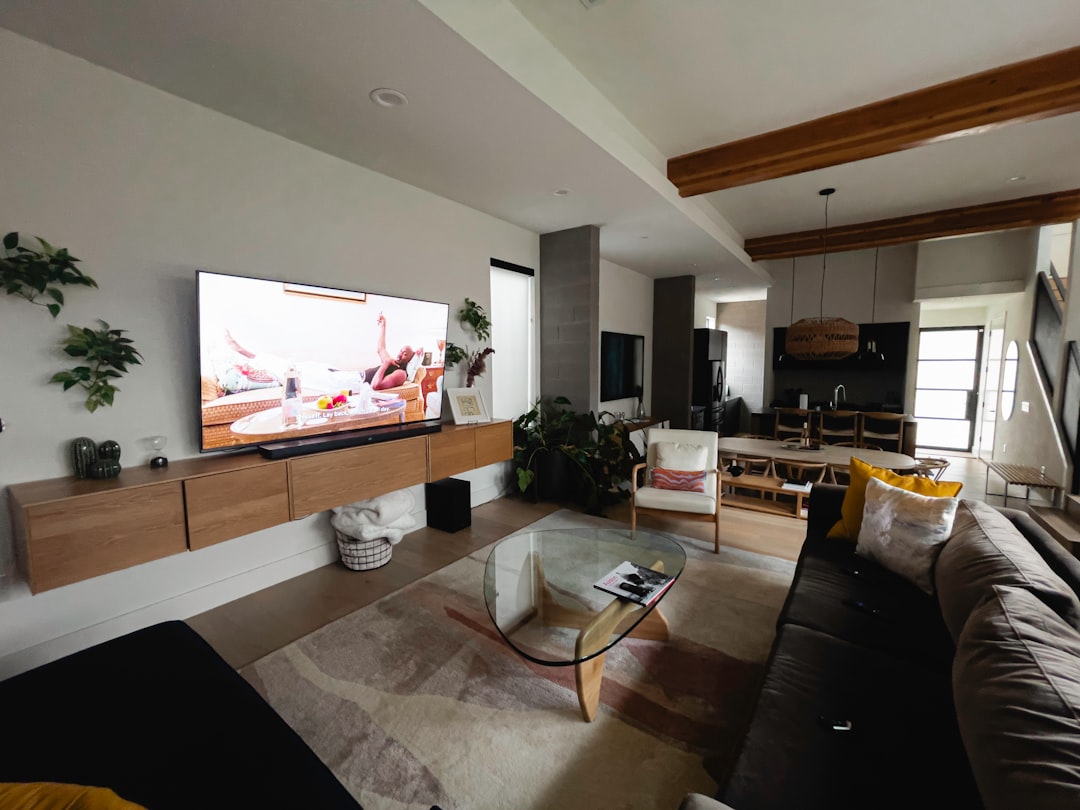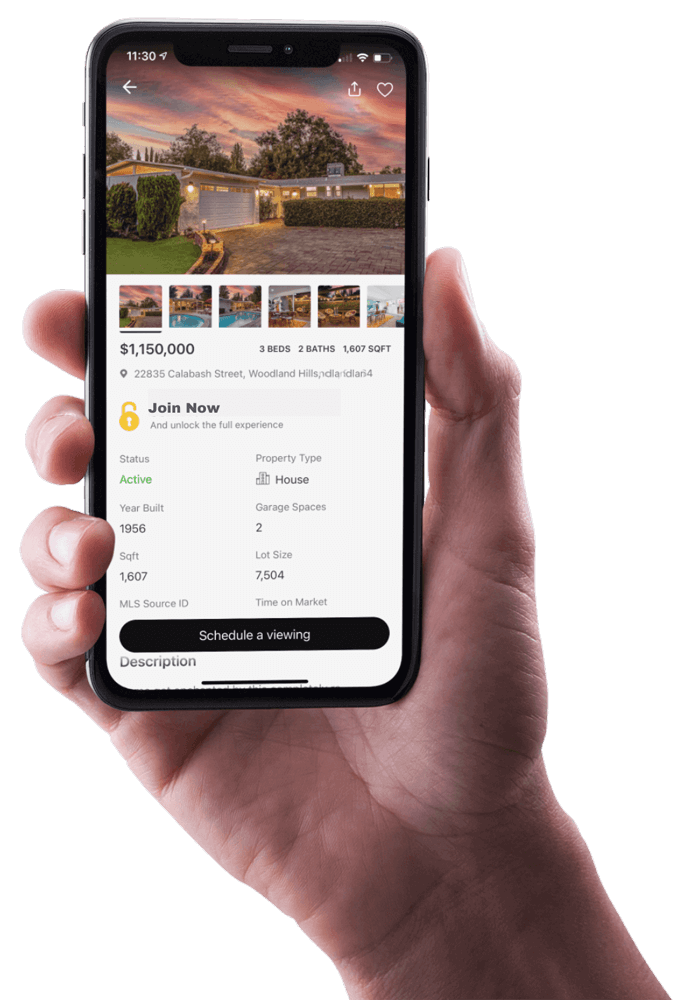The Rio Grande Plan is a sweeping citizen-driven vision to transform Salt Lake City's western downtown edge by relocating heavy and regional rail infrastructure below grade, restoring a historic train depot, and unlocking roughly 75 acres of land for redevelopment.
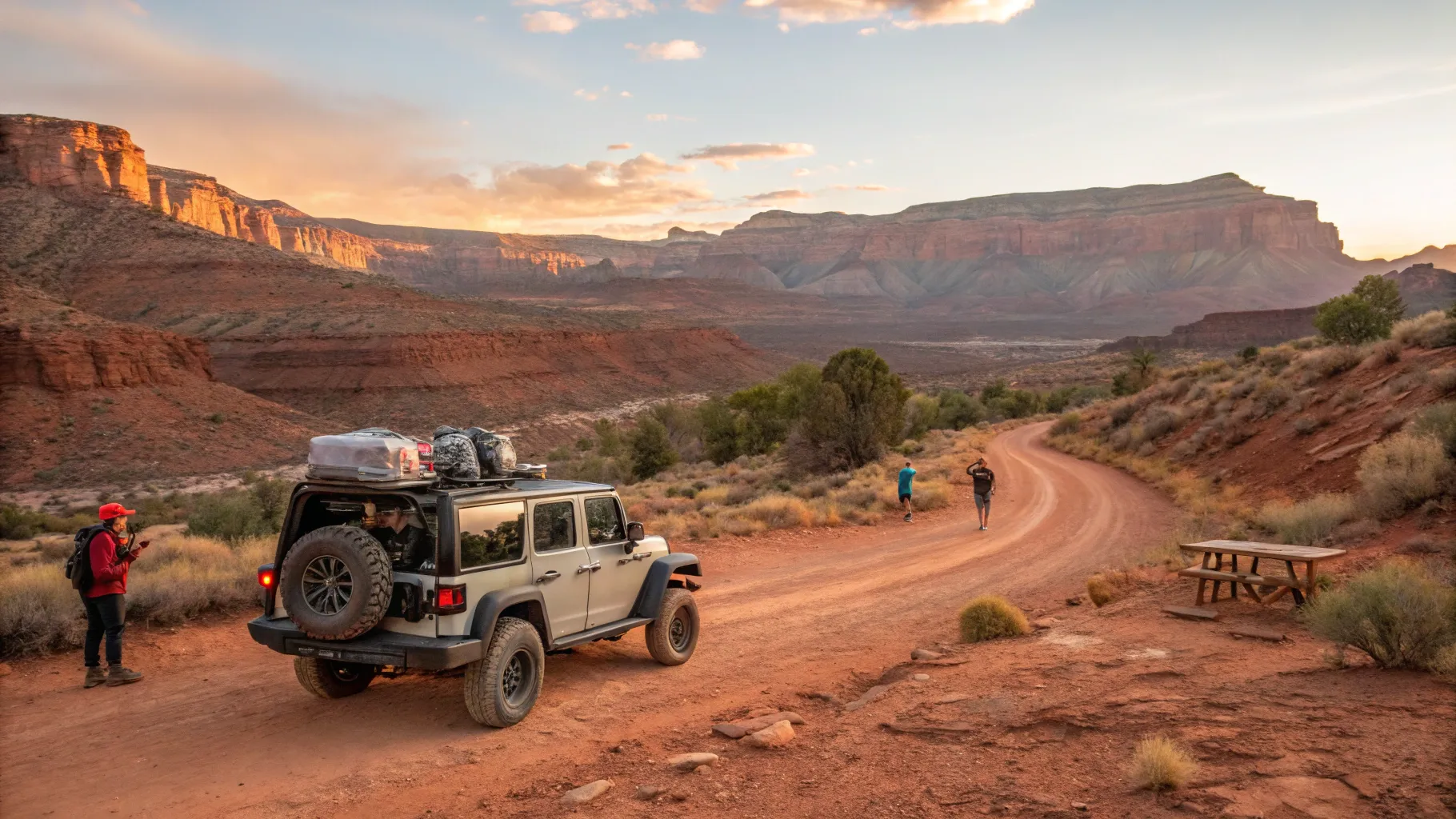
Southern Utah's red rock country is more than a collection of postcard views; it is a living landscape full of unexpected micro-destinations that reward curiosity, preparedness, and a vehicle with four-wheel drive. This guide walks through a single, carefully paced day that intentionally sidesteps busy national-park crowds in favor of lesser-known natural features, desert drives, and a family-run winery—all within a radius that highlights why lifestyle and recreational access are key selling points in local real estate markets. Intended for prospective buyers, investors, and anyone assessing lifestyle value in Utah communities, the narrative covers route planning, geology, vehicle preparation, timing, safety, and the intangible benefits of living where backyard adventures become weekly rituals.
Outline & Quick Overview
- Introduction: Why choosing lesser-known attractions matters for lifestyle and property value
- Suggested one-day itinerary (summary)
- Stop-by-stop deep dives:
- High Road Campground — pragmatic overnight base
- Red Hollow Canyon — short slot, big impression
- Belly of the Dragon — a unique roadside culvert with dramatic erosion
- Moqui Sand Caves — paleo-sandstone pockets and tactile landscapes
- Sand-road strategy — tire pressure, recovery gear, and soft-sand technique
- Peek-A-Boo (Red Canyon) Slot Canyon — the payoff: colors, cool air, and tight squeezes
- Coral Pink Sand Dunes State Park — sandboarding potential and dune ecology
- Water Canyon Winery — regional produce, natural wines, and a dining finale
- Real estate perspective: Why proximity to hidden outdoor experiences increases market appeal
- Safety, seasonal considerations, and flash-flood awareness
- Photography, packing, and accessibility tips
- FAQs tailored for visitors and buyers
Why Skip the Crowds? A Real Estate–Focused Rationale
When evaluating property in Southern Utah—whether Kanab, Hildale, St. George, or nearby townships—proximity to major attractions is often marketed as a key advantage. However, two subtler attributes deserve equal attention: the availability of quieter, locally cherished places and access to recreational diversity within a short drive. Neighborhoods that provide both convenient access to well-known parks and the option to escape into less trafficked vantage points tend to attract owners who value privacy, repeatable weekend recreation, and the ability to host visitors without the logistical headaches associated with heavily regulated national park access.
This day-trip blueprint showcases how the region’s scenic variety can be experienced without the constraints of shuttle lines, permit windows, or crowded trailheads. It also paints a picture of why certain neighborhoods command premium prices: the ability to access one-of-a-kind geologic features, dune systems, and artisan food and beverage offerings within an hour's radius enhances lifestyle value and broadens the buyer pool from simple vacation renters to outdoor-focused homeowners and retirees seeking a balanced, active lifestyle.
Suggested One-Day Itinerary (Summary)
- Base: High Road Campground — secure an RV site or a primitive spot with four-wheel drive access.
- Morning: Red Hollow Canyon — an accessible half-mile slot experience to warm up and orient to Navajo sandstone formations.
- Mid-morning: Belly of the Dragon — quick roadside stop through a sculpted highway culvert with dramatic airflow and polished surfaces.
- Late morning: Moqui Sand Caves — a one-mile roundtrip with tactile, soft sandstone textures and photo opportunities.
- Afternoon: Drive a soft-sand 4WD road toward Peek-A-Boo (Red Canyon), air tires down to ~20 psi, and traverse roughly 3–4 miles of sandy backroad.
- Mid-afternoon: Peek-A-Boo Slot Canyon — the marquee slot canyon experience with narrow passageways, ladders, and cool canyon air.
- Late afternoon: Coral Pink Sand Dunes State Park — dune view overlook, potential sandboarding if time allows; park entry fee applies.
- Evening: Water Canyon Winery in Hildale — local wines, family-run tasting room, and dinner at the winery café to close the day.
High Road Campground: The Practical Overnight Base
Starting logistics set the tone for any multi-stop day in remote country. The High Road Campground serves as a practical launching point for the loop described here. Sites range from full-hookup RV spots to primitive camps tucked farther back on unmaintained tracks requiring high-clearance 4WD. Amenities noted by visitors include laundry facilities, showers, and a variety of site types—important considerations for buyers weighing full-time RV living versus a permanent home with guest accommodation.
For property seekers, the presence of a versatile campground nearby has practical implications:
- Short-term rental potential and seasonal visitor demand can boost cash-flow projections.
- Support services (laundry, showers) increase the appeal of neighboring towns for longer stays and remote working seasons.
- Camping infrastructure indicates municipal or county investment in tourism, which often leads to improved roads and utilities that further benefit nearby residential neighborhoods.
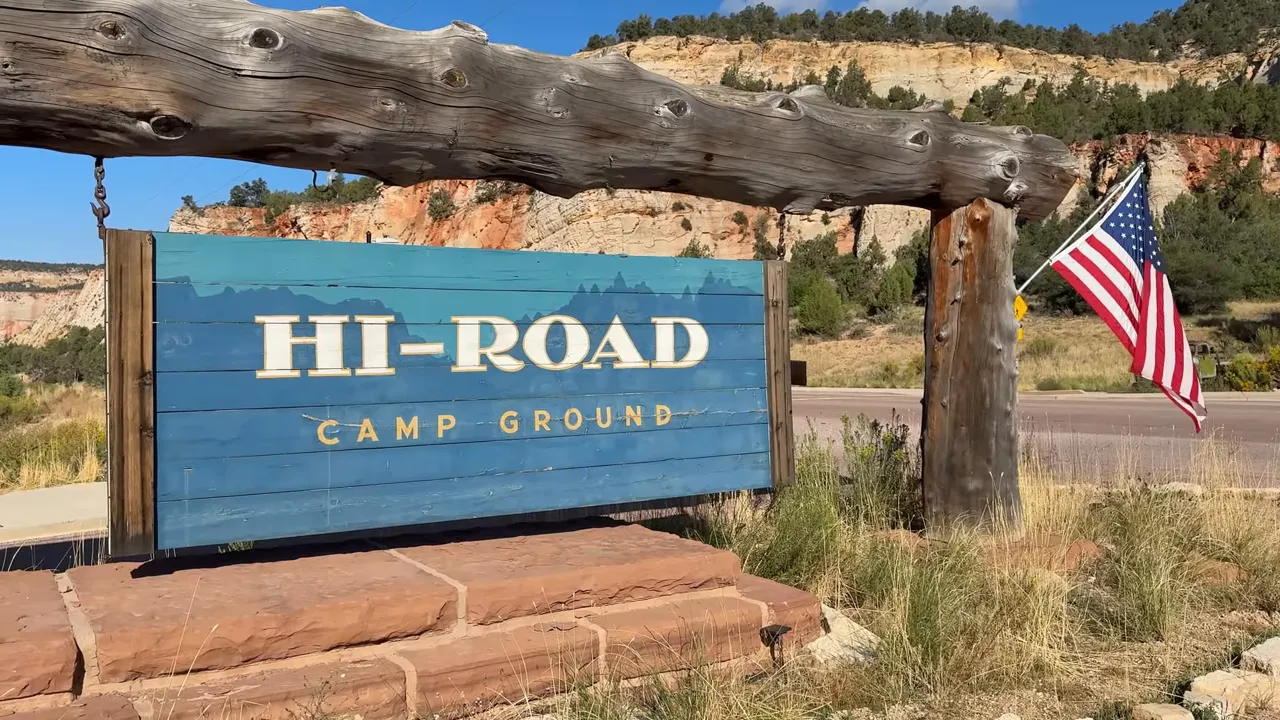
Red Hollow Canyon (Orderville): Half-Mile Slot for Immediate Gratification
Red Hollow Canyon, near Orderville, provides a textbook introduction to Navajo sandstone slot formation without requiring a multi-hour commitment or strenuous terrain. The half-mile out-and-back is quick, tactile, and surprisingly dramatic: visitors can often touch both walls of the canyon at once and observe the layered polish created by wind and seasonal water flow.
Key geological takeaways important for nature-minded buyers:
- Navajo sandstone is typically a homogeneous sandstone—meaning the material composition is uniform through the unit rather than featuring hard resistant layers. This uniformity influences erosion patterns and the development of narrow, smooth-walled canyons.
- During monsoon season, rapid water flows move copious amounts of sand and debris, effectively functioning as a sandpaper to carve and polish canyon walls. Wind follows, further smoothing exposed surfaces.
- The softness of the rock also makes it susceptible to human damage; petroglyphs and carvings are at risk, and visitors should always avoid touching or carving cultural or geological features.
Practical visitor notes:
- Trail distance: approximately 0.5 mile round-trip—accessible for most fitness levels and a great warm-up stop.
- Conditions: the path can be narrow and may end at a deep hole or a constriction; use caution at the terminus and avoid climbing unstable edges.
- Best times: early morning light softens the sandstone colors; however, afternoon visits still provide good texture and warmth for photographs.

Belly of the Dragon: An Unlikely Sculpted Culvert
Not every dramatic landscape is entirely natural. The Belly of the Dragon is an evocative name for an engineered culvert under Highway 89 where wind and water have sculpted the internal walls to a surprising degree. The result is a tunnel-like passage that resembles organic shapes more commonly associated with natural slot canyons.
Why it’s worth stopping:
- Accessible without a long hike—ideal for visitors pressed for time or inclement weather.
- Strong airflow funnels through the opening; visitors will often experience a noticeable drop in temperature compared to the highway outside—a reminder that microclimates exist even in seemingly uniform desert environments.
- The corridor provides visual contrast to natural canyons, illustrating erosion processes that mimic nature through hydraulic force concentrated by human infrastructure.
Visitor considerations:
- Watch for flash-flood hazards during monsoon season; the culvert was designed to pass water and can fill rapidly.
- Respect nearby cultural marks—distinguish between pictographs (paint) and petroglyphs (carving), and do not disturb either.
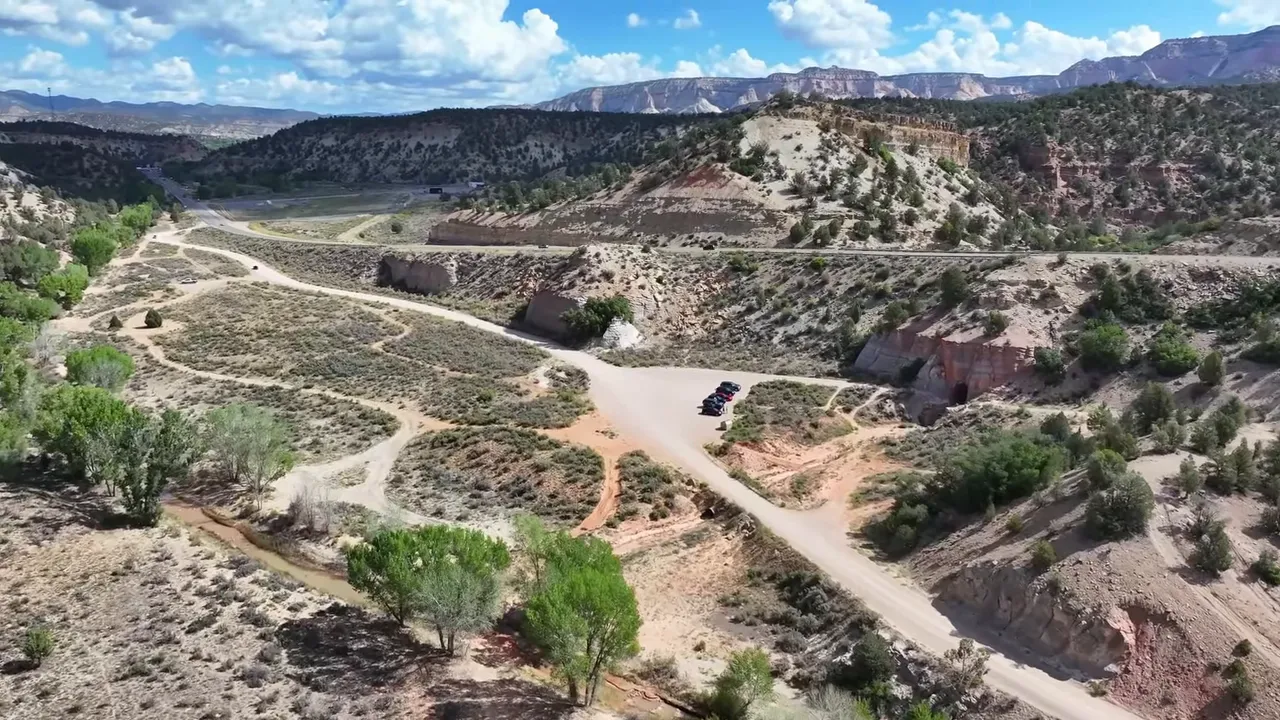
Moqui Sand Caves: Sandstone Becoming Sand Again
The Moqui Sand Caves demonstrate an intriguing loop in geologic time: ancient dune deposits consolidated into Navajo sandstone, uplifted and exposed, and now being weathered back into sand. The caves are short hikes roughly one mile round-trip from the roadside and offer playful, tactile spaces that invite climbing and exploration.
Why these features matter beyond the novelty:
- They illustrate ongoing geomorphic processes: deposition, lithification, uplift, and erosion—valuable educational contexts for families and school groups.
- The texture and softness of the rock are distinct—stones crumble readily under touch, rewarding sensitivity rather than force.
- Such roadside attractions, though sometimes written off as “gimmicks,” create local flavor and contribute to the experiential economy, which supports nearby hospitality and real estate markets.
Field notes for visitors:
- Round-trip distance: ~1 mile—good for casual hikers and families.
- The interior often feels unexpectedly cool and may carry unique smells derived from vegetation concentrations or mineral outgassing.
- Potential hazards: soft rock edges can collapse; avoid climbing into unsupported cavities.
The Sand Road: How to Prepare for Soft-Sand Backcountry Driving
One of the pivotal transitions in this itinerary is the decision to leave paved roads and follow a sandy backroad where GPS tracks can be unreliable and conditions are highly variable. Proper vehicle preparation and technique are non-negotiable for those who want to reach certain slot canyons without an eight-mile hike.
Essential gear checklist:
- Functioning 4WD high-clearance vehicle. A low-clearance vehicle or standard passenger car is not recommended and often prohibited for liability reasons.
- Portable air compressor and a reliable tire-pressure gauge. Air-down to approximately 20 psi is recommended for many soft-sand tracks, but adjust based on vehicle weight, tire construction, and load. Known practice in the area includes temporarily lowering tire pressure to increase tire footprint and float over soft sand.
- Recovery gear: traction boards, rated tow straps, a compact shovel, and gloves. Traction boards are especially effective in soft sand when used in combination with modest throttle application.
- Spare tires and basic mechanical tools. Suspension and underbody brushes are common on desert tracks and a tire-pressure sensor cluster may misbehave when pressures are significantly altered.
- Navigation: a physical map, local trail notes, and a two-way radio or satellite messenger in case of cell coverage gaps.
Driving tips and etiquette:
- Enter tracks slowly and keep momentum consistent. Low, steady speed reduces the risk of digging in.
- Avoid sudden braking or aggressive steering which can dig tires into soft surfaces.
- Observe any posted signage—some roads require high-clearance 4WD and may report fines for noncompliance.
- Yield to locals and respect private property; many sand tracks border ranches or conservation land.
Peek-A-Boo Slot Canyon (Red Canyon): The Showstopper
Peek-A-Boo is one of the most popular backcountry slot canyons in the region, prized for its sculpted walls, dynamic color range, and cool, enveloping interiors. The canyon’s nickname is literal: a small opening or “slide” within the gorge functions like a peekaboo moment, and its ladder placements and squeezes reward nimble hikers.
Access and logistics:
- If the soft-sand track is navigated by vehicle, the walking distance to the impressive sections is significantly reduced. Alternately, the trailhead for a pedestrian-only approach requires an approximately eight-mile hike from the primary parking area—this demands time, hydration planning, and heat mitigation.
- There are posted rules and fines intended to protect the canyon; scratching or carving walls can result in penalties.
- Rangers and experienced hikers often recommend timing entry into slots during midday if the goal is to capture vertical light beams; however, light beams are site- and season-dependent and may require overhead sun angles to be visible.
What makes the canyon special geologically and experientially:
- Slot canyons like Peek-A-Boo occur where conditions concentrate erosive forces along narrow channels. Only specific rock types and climatic regimes produce these features; thus, they are globally rare and regionally concentrated in parts of Utah and northern Arizona.
- Microclimates within the canyon can differ drastically from the surrounding desert. Cold air pools and wind-sucked channels can lower temperatures and offer dramatic contrasts on hot days.
- Color stratification is often visible: maroons, pinks, purple hues, and vivid reds are a function of iron oxide content, mineral coatings, and sunlight scattering through narrow apertures.

Coral Pink Sand Dunes State Park: Dune Ecology and Recreation
Coral Pink Sand Dunes State Park collects sand sourced largely from surrounding Navajo sandstone outcrops. This valley acts as a sand-trap where winds deposit fine grains, producing an extensive dunefield that is both an ecological niche and a recreational asset.
Visitor logistics & costs:
- Park entrance fees apply—typical day-use fees are modest (for example, some visitors report $15 per vehicle), though rates are subject to change and differ for non-residents and certain vehicle classes.
- Sandboarding and sled rentals are often available at the visitor center and can range in price (items around the time of typical reporting were near $25 per board), but operating hours and rental availability may end before evening. Always check current seasonal hours.
- Walking the dunes is deceptively strenuous; ascent and descent create a challenging aerobic workout even for experienced hikers.
Ecological and real estate context:
- Dune systems host specialized plants and insects adapted to moving sands; the presence of such ecosystems enhances interpretive and educational value for nearby communities.
- Properties overlooking dunefields or with dune-access rights may attract niche buyers looking for recreational proximity—sellers can highlight visibility corridors, ease of access, and the availability of rentals or guided services as selling points.
Water Canyon Winery: Local Agriculture, Natural Wine, and Farm-to-Table Hospitality
Ending the day at Water Canyon Winery in Hildale provides an excellent example of how small-scale agriculture and hospitality contribute to regional desirability. The winery operates as a tasting room, event venue, and café, and growers produce several varietals planted and managed in small-acre plots. The on-site presentation blends agritourism with locally sourced cuisine—elements that increasingly attract lifestyle buyers seeking culinary culture near their homes.
Highlights of the winery experience:
- Small-scale viticulture: Vines include Italian varietals such as Sangiovese and Barbera, alongside Cabernet Sauvignon and Cabernet Franc. Vineyard plots of under two acres total suggest hands-on management and intimate scale, which often translates to unique, limited-production bottlings.
- Innovative oak practices: The winery uses toasted white French oak “cubes” to impart oak character without full barrels. These cubes offer experimental control and sustainability benefits by extracting flavor using less wood than barrels—a practical talking point for buyers interested in local production methods.
- Natural wine philosophy: A natural wine approach—minimal intervention in fermentation, ambient yeast, and reduced or zero added sulfites—resonates with a growing market segment. Buyers and renters increasingly favor culinary and beverage experiences that feel artisanal and transparent.
- Family operation and hospitality: The property’s blended use as a wedding venue, tasting room, and café staffed by family members contributes to a welcoming, community-oriented atmosphere. Local dining offerings sourced from nearby orchards and gardens amplify the agrarian identity of the region.
Tasting experience and service notes:
- Flight structure: Typical tastings may include an orange-muscat skin-contact wine (an “orange” wine), a light-bodied Tempranillo-style varietal, an unoaked red blend (notable because it spends no time on oak), and a full-bodied Petite Sirah that offers bold flavor and mouthfeel.
- Interactive oak demonstration: The unoaked red is often offered with a cube of toasted French oak to drop into the glass. Tasting before and after demonstrates oak’s impact on aroma, tannin impression, and perceived body—an immersive way to learn about winemaking choices.
- Menu and farm-sourced dishes: A small café may serve dishes such as wild-caught salmon with local creamed corn, a rosemary compound butter-tenderloin, and a croissant-based bread pudding with nearby-orchard peaches—menu items that highlight local sourcing and culinary skill.
Investment and lifestyle insights:
- Small wineries and tasting rooms increase destination appeal, providing event-driven revenue streams such as weddings and live music; adjacent properties can benefit from increased traffic if zoning allows compatible commercial or short-term rental uses.
- Proximity to agritourism enhances the perceived quality of life for residents and may justify premium pricing for homes near such destinations.
Safety, Seasonal Notes, and Environmental Considerations
Desert travel always requires thoughtful safety planning. Two issues merit particular attention for this itinerary: monsoon-driven flash floods and the thermally variable microclimates inside slot canyons.
- Flash floods: Monsoon season can generate rapid, high-energy water flows that funnel into washes and culverts. Roads and culverts designed to convey water (like the Belly of the Dragon) can quickly become hazardous. Always check localized weather updates and avoid narrow slot canyon entry during heavy or upstream rainfall.
- Temperature and microclimate: Slot canyons often feel dramatically cooler than the surrounding desert, sometimes by dozens of degrees. This can provide relief during heat, but it also means clothing and layering choices are important—lightweight fallbacks or an insulated layer can be useful when temperatures drop in shaded passages.
- Leave No Trace: Many of these places are fragile and culturally sensitive. Avoid carving, tagging, or otherwise marking rock surfaces. Physical damage to sandstone is permanent and degrades future visitor experiences as well as cultural resources.
- Cell coverage and rescue: Expect limited cell coverage in backcountry areas. Carry a personal locator beacon or satellite communicator if venturing far from trailheads, and leave trip plans with someone in town when heading into remote tracks.
Photography and Timing Tips
Capturing the best images in Southern Utah’s desert requires intentional timing and simple technical awareness. A few practical pointers follow:
- Golden hour (early morning and late afternoon) enhances color saturation in sandstone and sand—a prime time for wide-angle shots and panoramic vistas.
- Slot canyons are notoriously challenging for dynamic range. Devices with good shadow recovery or the use of HDR modes can preserve both the deep shadows and the bright rim light. For dramatic overhead shafts, mid-day sun is ideal—but light beams are subject to seasonal sun angles.
- Include a scale element in photos (person, dog, or vehicle) to communicate the intimacy of narrow canyons; viewers respond to scale references when assessing the experiential value of a locale.
- Bring a small microfiber cloth—sand will find camera gear. A lens brush and plastic bag for storage will prolong equipment life.
Real Estate Perspective: How These Places Influence Market Demand
Proximity to lesser-known attractions influences buyer preferences and can justify higher prices when combined with accessibility, services, and community quality. Several market factors arise from such recreational proximity:
- Lifestyle buyers: Active families, retirees seeking outdoor access, and remote professionals increasingly prioritize homes within an easy drive of varied recreation rather than proximity to a single marquee park. Communities that offer both convenience to major parks and access to quieter, repeatable places attract a broader buyer base.
- Seasonal rentability: Properties that offer privacy and a variety of nearby activities—sand dunes, slot canyons, and local wineries—often perform better in short-term rental markets because they appeal to multi-generational and activity-oriented groups.
- Infrastructure implications: Towns investing in campgrounds, ranger services, and local trail maintenance indicate municipal support for tourism, which can translate into more stable property values and incremental infrastructure upgrades.
- Comparative advantage: A house in Kanab or Hildale that offers easy access to both peaceful sand caves and vibrant event-driven venues such as a family-run winery provides a diversified set of leisure options—valuable in buyer decision-making.
For readers seeking local listings or to analyze neighborhoods that combine these lifestyle assets with market fundamentals, one useful resource is the regional property portal at https://bestutahrealestate.com which provides current inventory and market overviews for towns across Southern Utah.
Packing List & Final Practical Checklist
- Vehicle: high-clearance 4WD with spare tire, jack, tow points
- Recovery: traction boards, tow strap, compact shovel, gloves
- Tire gear: portable compressor, gauge—plan to air down and re-inflate
- Navigation: physical map, downloaded offline map tiles, compass
- Safety: water (minimum 1 gallon per person per day), sun protection, first-aid kit, headlamp
- Comfort: layers for cooling microclimates inside slots, sturdy shoes for sand, lightweight hiking poles if desired
- Etiquette: small trash bags to pack out waste, journal or camera for notes rather than carving
- Time management: start early to fit multiple stops and avoid late return to camp; Sandboard rentals often close before evening.
Sample Day Timeline (Start-to-Finish)
- 7:00 AM – Depart campground after a light breakfast.
- 8:00 AM – Arrive at Red Hollow Canyon for a cool, short slot walk.
- 9:30 AM – Quick stop at Belly of the Dragon to experience the polished culvert and airflow.
- 10:15 AM – Walk Moqui Sand Caves (allow ~1 hour for exploring and photos).
- 12:00 PM – Prepare vehicle: air down to recommended PSI and secure recovery gear.
- 12:30 PM – Drive soft-sand track toward Peek-A-Boo; plan for 3–4 miles of reduced-speed travel.
- 1:15 PM – Hike and explore Peek-A-Boo slot canyon; allow 1–2 hours depending on interest.
- 4:00 PM – Visit Coral Pink Sand Dunes overlook for golden hour and possible sandboard run.
- 6:00 PM – Arrive at Water Canyon Winery for tasting, dinner, and sunset views.
- 8:30 PM – Return to campground with re-inflated tires and satisfied party.
Community and Economic Signals: What Local Buyers Should Watch For
Local economies that successfully link small-scale agritourism, family-run hospitality, and accessible outdoor experiences show resilient appeal to a broad buyer demographic. Observers and prospective buyers should watch for:
- New or expanding tasting rooms and small-food operations—these suggest an evolving culinary culture that attracts lifestyle-minded residents.
- Improvements in road maintenance and signage near backcountry routes—often a sign of increased municipal prioritization for tourism corridors.
- Campground upgrades, extended park visitor hours, or enhanced visitor centers—indicators of long-term public investment which can stabilize seasonal visitation patterns.
- Zoning that balances visitor-serving commerce with residential protections—this helps maintain neighborhood character while allowing for economic development.
Closing Notes: A Different Kind of Southern Utah Appeal
There is a distinct difference between living next to a world-class national park and residing in a place where the everyday landscape offers small, repeatable wonders. Neighborhoods that provide both kinds of access—crowd-appeal destinations and intimate, lesser-known spots—can be especially compelling to a diverse pool of buyers and renters. The itinerary detailed here underlines how a single day can unpack an entire lifestyle: short hikes that fit between errands, sand-and-sun afternoons, and quiet evenings tasting local wines. For buyers considering Southern Utah, this combination of dramatic scenery, small-scale agriculture, and accessible backcountry often tips the scales toward communities that support both active living and strong market fundamentals.
For those ready to evaluate listings that pair outdoor access with market insight, regional inventory and neighborhood pages are updated frequently. See local property resources at https://bestutahrealestate.com and consult official resources such as utah.gov for land and park regulations or nar.realtor for broader market context when preparing an offer.
Whether the priority is a weekend escape home base or a full-time move that integrates daily adventures, the subtle corners of Southern Utah—hidden slots, sand caves, dune valleys, and family wineries—represent tangible lifestyle assets. These features augment neighborhood narratives, and for many buyers, they are the difference between a house and a home.
Frequently Asked Questions
What type of vehicle is required for the sand road and reaching Peek-A-Boo?
High-clearance four-wheel drive is recommended for the sand road leading to Peek-A-Boo. A 2WD or low-clearance vehicle risks becoming stuck or damaging the undercarriage. Many routes include washboard sections and soft-sand stretches; use modest momentum, air down tires to increase footprint, and carry recovery equipment including traction boards and a shovel.
How much time should be allowed for the full itinerary?
Allocate a full day starting early (7:00-8:00 AM). The stops outlined--Red Hollow, Belly of the Dragon, Moqui Sand Caves, Peek-A-Boo, Coral Pink Sand Dunes, and a winery dinner--are compact but numerous. Time management matters: the backcountry drive and sand-boarding options can consume extra time, and nights can fall quickly in the desert.
Are slot canyons safe during monsoon season?
Slot canyons can become dangerous during monsoon season due to flash flooding. Even distant storms can send sudden torrents through narrow channels. Check local weather, avoid canyon entry if storms are predicted, and follow park or ranger advisories. Flash-flood risk is one of the primary hazards in slot-canyon travel.
Are there fees or permits required for these stops?
Some stops carry small entrance or day-use fees--Coral Pink Sand Dunes State Park typically charges a per-vehicle day-use fee. Campgrounds may have nightly fees or day-use rates for visitors. Always confirm current rates and any permit requirements with local land managers before visiting.
Do cell phones work reliably in these areas?
Cell coverage is often limited in backcountry zones; do not rely on mobile phones for navigation or emergency communication alone. Consider a satellite messenger or personal locator beacon for remote travel. Carry printed maps or offline map downloads, and let someone know the planned route and estimated return time.
How can proximity to these attractions affect property values?
Proximity to a variety of recreational resources often increases demand among lifestyle buyers and vacation-rental investors. Properties that offer easy access to diversified outdoor activities--dunes, slots, family-friendly caves, and agritourism hubs--can command premium prices. However, buyers should also evaluate infrastructure, zoning, seasonal visitor patterns, and maintenance of access roads when considering long-term value.

